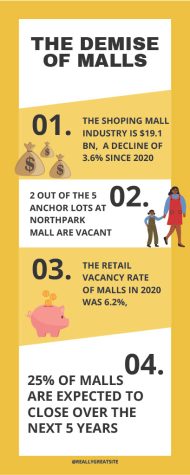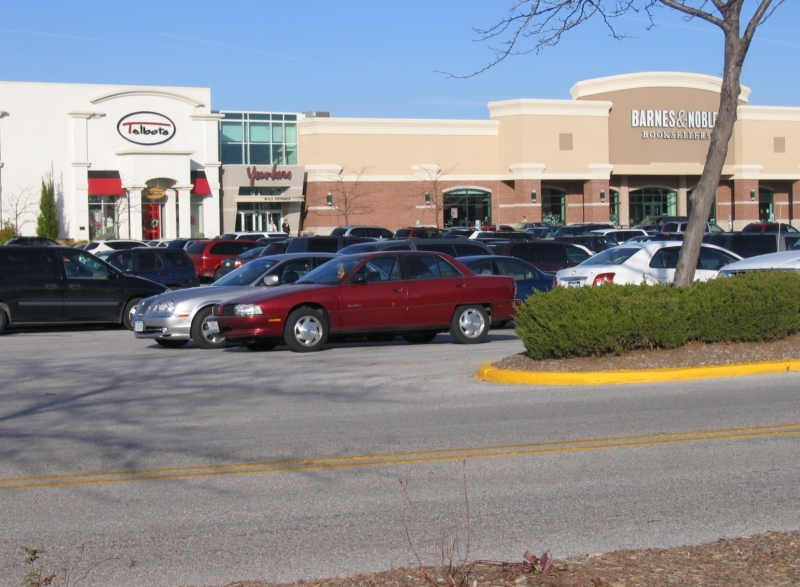What was once a hallmark of teen culture in America has faded from popularity.
The concept of the shopping mall seems simple and practical; a seamless shopping experience unhindered by weather or traffic appeals to the sensibility of the masses. But to young people, they were more than just a place to shop. To many, the mall represented a place to express one’s individuality.
The first indoor shopping mall opened in Edina, Minn. in 1956; in the following decades, thousands sprung up across the nation. They were designed to provide a space for community and interaction to bring together the sprawling suburbia that dominated the country at the time.
By the ‘80s and early ‘90s, the mall had reached its heyday. Malls were achieving and exceeding their intended purpose in a compelling way. The mall was a powerhouse of commerce and a cultural hub for youths. The physical intersection of shopping, food and entertainment was the perfect social setting before instant communication.
The popularity of the mall is depicted in the third season of the smash-hit Netflix TV series “Stranger Things.” Many episodes are centered around a vibrant, lively Starcourt Mall, jam-packed with teenagers and their friends. Junior Nikhil Ramaraju was surprised when he watched the first episode. “I didn’t realize that the mall was so popular. It seemed like the place to be for teenagers, which is something that I don’t really see today,” he said.
And though the importance of the mall may have been exaggerated for cinematic effect, the notion that the mall was a cornerstone of social life was imparted impactfully by the series.
Nowadays, the role of the shopping mall has shifted from a place of gathering back to simply a commercial outlet, trademarked by failing industry and dying social atmosphere. On a walk through NorthPark Mall in Davenport, Iowa, one can observe vacant lots and empty halls. This decline can be seen more drastically at Southpark Mall in Moline, Ill.

But what caused mall culture to die out?
Perhaps the advancement of technology is to blame. Widespread accessibility to the internet and the development of online shopping inevitably led to a shift in consumer behavior. Many large chain stores now have websites where people can buy clothes or other goods without having to leave the comfort of their own homes. Malls were a step towards increased consumer convenience, but online shopping is a leap light-years forward.
Moreover, instant communication between young people over the internet allowed them to interact socially and communicate plans ahead of time. Text messaging and social media changed the dynamic of friendship among young people, and they no longer required face-to-face interactions to communicate.
However, some still enjoy the idea of the mall, even though it is mostly seen as a place of commerce. “I don’t necessarily go to meet new people when I go shopping but when I do go, I go with friends as a social hangout,” said senior Eyah Gambong. Though most people have abandoned the mall, some hold onto it for the social interaction that shopping brings.
Yet the contemporary mall continues to disappoint. Visitors with a romanticized vision of vibrance and adventure are shattered by dingy lighting, overpriced goods and an underwhelming overall experience.
Such is emblematic of a dying industry.










Anna Smith • Apr 22, 2022 at 10:06 pm
I have gone to the mall a couple times to hang out with friends, but I agree that it’s underwhelming. You watch movies from the 80’s through the 2000’s and going to the mall looks amazing. There isn’t much to do at malls besides shop and eat, so teens hang with friends other places.